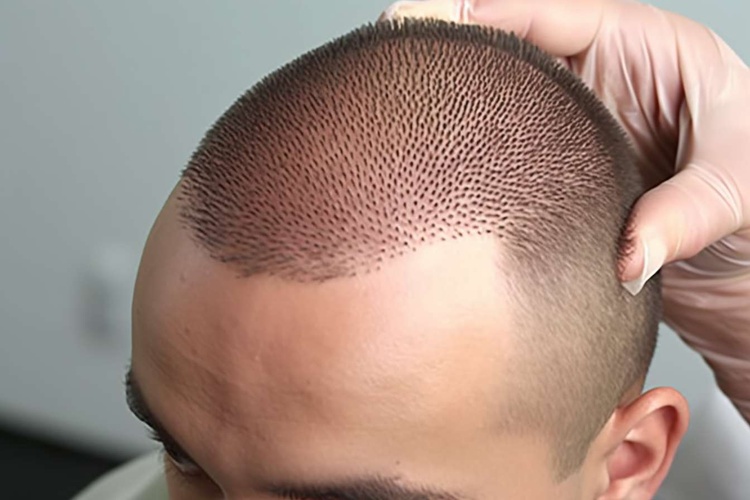Ultrasonic Liposuction: Advanced Fat-Reduction Options
Ultrasonic liposuction uses focused ultrasound energy to break down stubborn fat cells before removal, offering a refined body-contouring option with potentially quicker recovery and more precise sculpting than traditional techniques. Learn how it works, which areas respond best, what to expect during treatment and recovery, and how costs vary across providers.

How ultrasonic liposuction differs from traditional methods
Ultrasonic liposuction applies controlled ultrasound energy to target and loosen fat cells prior to suctioning them away. By liquefying or softening fatty tissue, the technique can make aspiration easier and allow surgeons to work with greater precision, particularly in denser or fibrous areas. Compared with standard suction-assisted liposuction, many patients report less forceful manipulation, which may translate to reduced trauma to surrounding tissues.
Advantages of receiving care in a clinical setting
Choosing a reputable medical clinic for ultrasonic liposuction brings several advantages. Experienced providers often offer comprehensive preoperative evaluations, tailored surgical plans, and close postoperative follow-up. Benefits you can expect when treatment is performed in a clinical environment include:
- Potentially shorter recovery times due to targeted tissue disruption
- More accurate contouring and uniform fat removal
- Greater capacity to address fibrous regions that resist traditional removal methods
- Access to medical oversight and immediate management of complications, should they arise
Comprehensive aftercare — including garment guidance, activity restrictions, and follow-up appointments — helps maximize results and safety.
Common treatment areas
Ultrasonic liposuction is suited to multiple regions where persistent fat deposits often remain despite diet and exercise. Typical areas treated include:
- Abdomen and flanks (love handles)
- Thighs and hips
- Upper arms and back
- Chin and neck areas for submental fat reduction
- Male chest (gynecomastia-related contouring)
Because the procedure can selectively soften fatty tissue, it’s often chosen for localized pockets that are difficult to sculpt with noninvasive approaches.
What to expect during the treatment process
The pathway from consultation to recovery usually follows several clear steps:
- Initial consultation and medical assessment: Your provider evaluates overall health, discusses goals, and determines candidacy for ultrasonic-assisted liposuction.
- Anesthesia: Many procedures are performed under local anesthesia with sedation; more extensive cases may require general anesthesia depending on the treatment area and surgeon preference.
- Tumescent solution application: A saline-based, numbing solution is infused into the target tissues to minimize bleeding and increase comfort.
- Ultrasonic energy application: A specialized probe delivers ultrasound to emulsify or loosen fat cells while minimizing damage to surrounding structures.
- Fat aspiration: The treated, liquefied fat is gently removed via cannula suction.
- Recovery and aftercare: Compression garments, short activity restrictions, and follow-up visits are standard components of recovery care.
Individual experiences vary, and your surgeon will outline a customized plan and timeline.
Cost considerations and provider options
Procedure prices depend on the geographic location, the number and size of treatment areas, the practitioner’s expertise, and facility fees. Below is a general range to help set expectations.
| Provider Type | Average Cost Range | Typical Treatment Scope |
|---|---|---|
| Urban Clinics | $3,500 - $7,000 | Multiple small-to-moderate areas |
| Medical Spas | $2,500 - $5,000 | Single localized area |
| Surgical Centers | $4,000 - $8,000 | Larger or combined areas, comprehensive care |
Prices, rates, or cost estimates mentioned in this article are based on the latest available information but may change over time. Independent research is advised before making financial decisions.
When comparing providers, consider board certification, before-and-after galleries, patient reviews, and what is included in the quoted fee (anesthesia, facility fee, garments, follow-up visits). Lower cost options may not include the same level of aftercare or clinic infrastructure as accredited surgical centers.
Safety, downtime and recovery expectations
Most patients experience swelling and bruising after ultrasonic liposuction, with visible improvement over several weeks. Many return to light activity within a few days and can resume more strenuous exercise in a few weeks, following the surgeon’s guidance. Typical recovery windows range from one to two weeks for routine activities, though healing times vary by individual and extent of treatment.
To minimize complications and support optimal outcomes:
- Follow your provider’s post-procedure instructions carefully
- Wear compression garments as directed to reduce swelling and support skin retraction
- Attend scheduled follow-up visits to monitor healing
- Report signs of infection, unusual pain, or other concerns promptly
Is ultrasonic liposuction right for you?
This technique is best suited for individuals in generally good health who have localized fat deposits resistant to diet and exercise. It’s not a substitute for weight loss or a solution for generalized obesity. A thorough discussion with a qualified provider will help determine candidacy, the best approach for your anatomy, and realistic outcome expectations.
This article is for informational purposes only and should not be considered medical advice. Please consult a qualified healthcare professional for personalized guidance and treatment.






